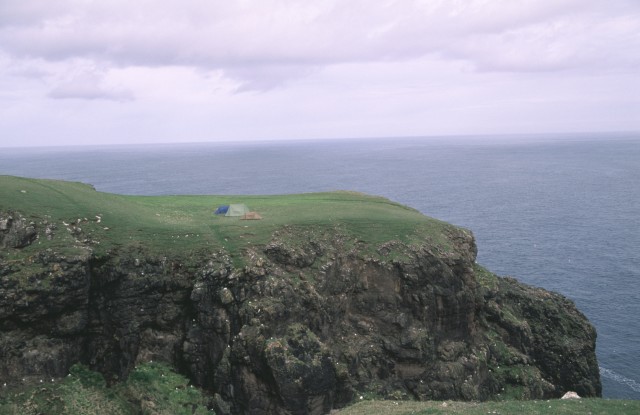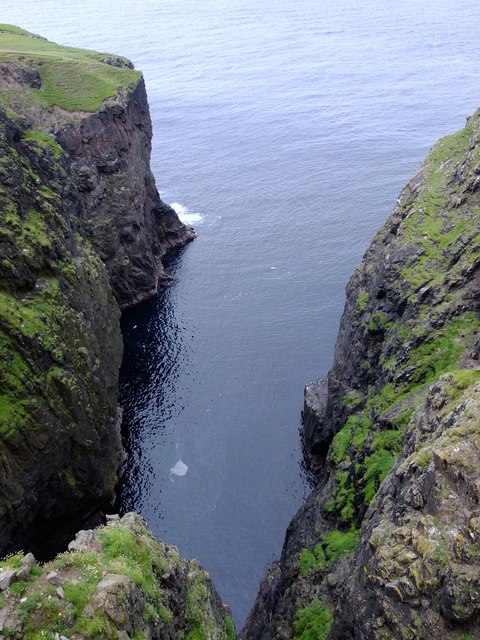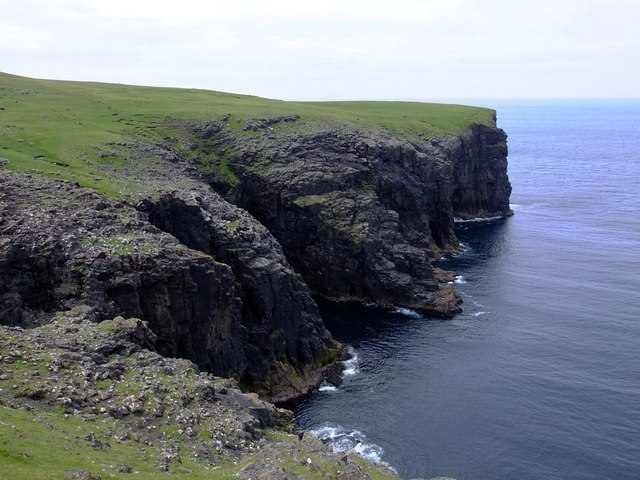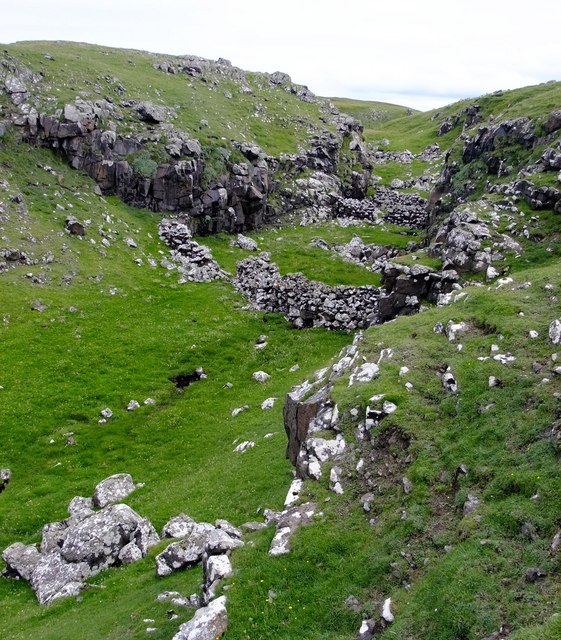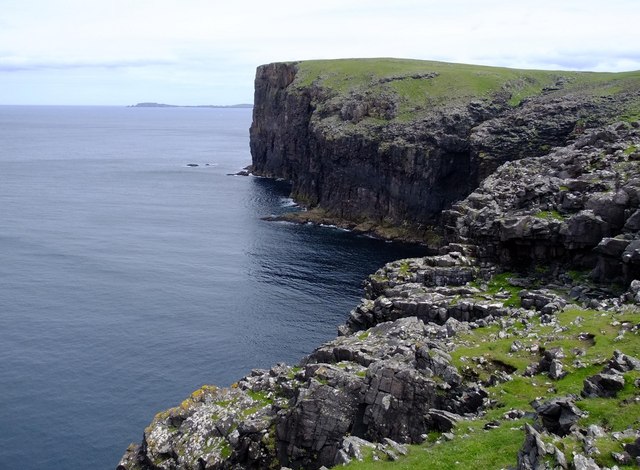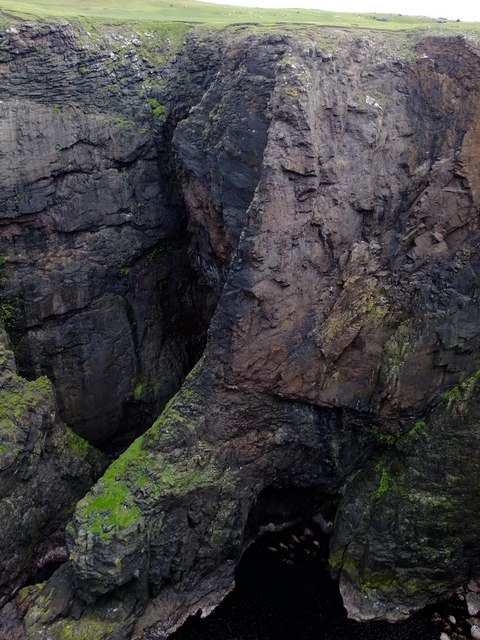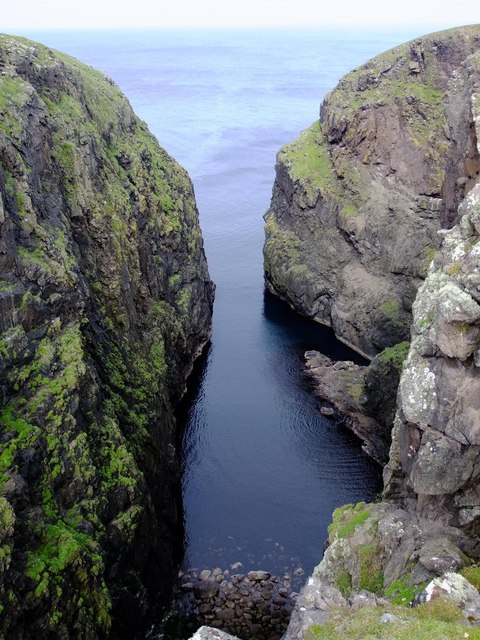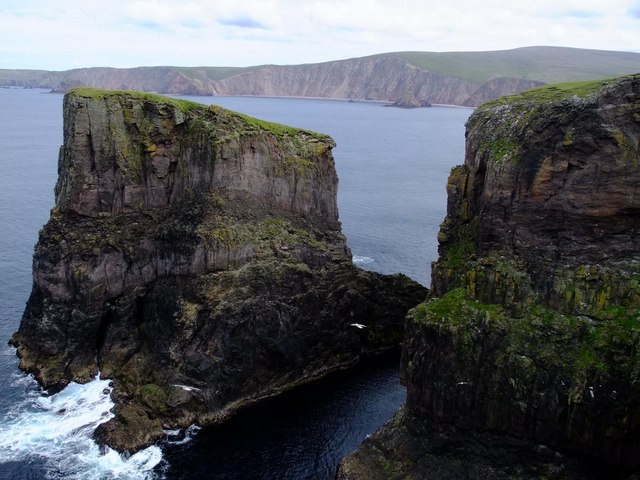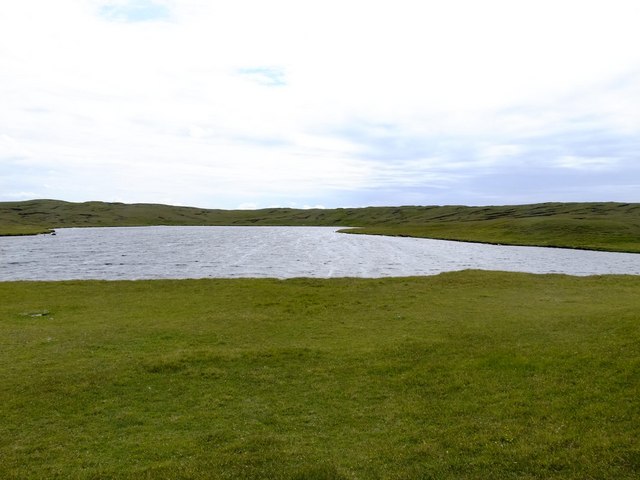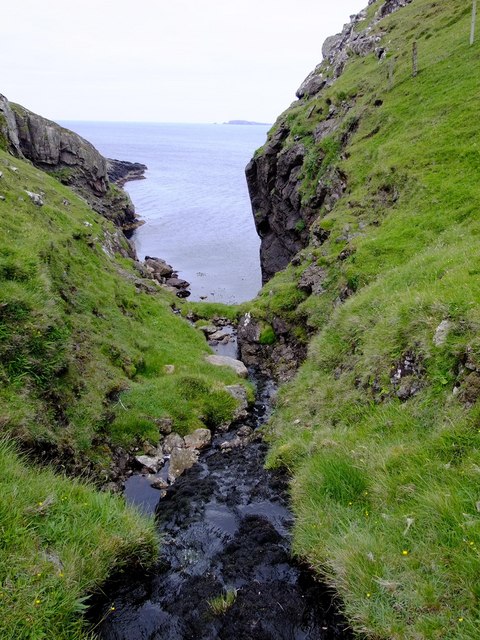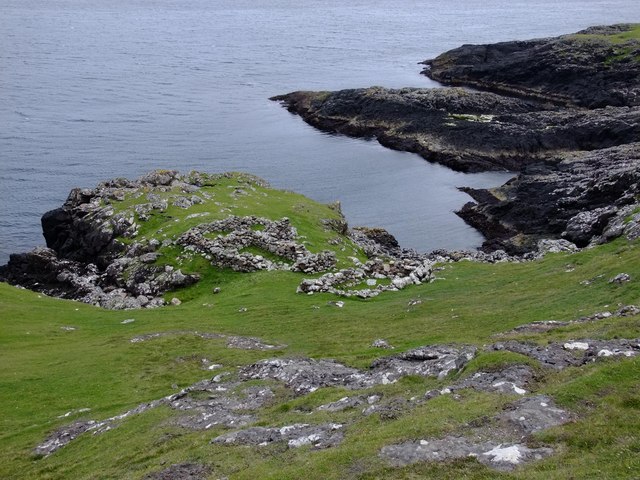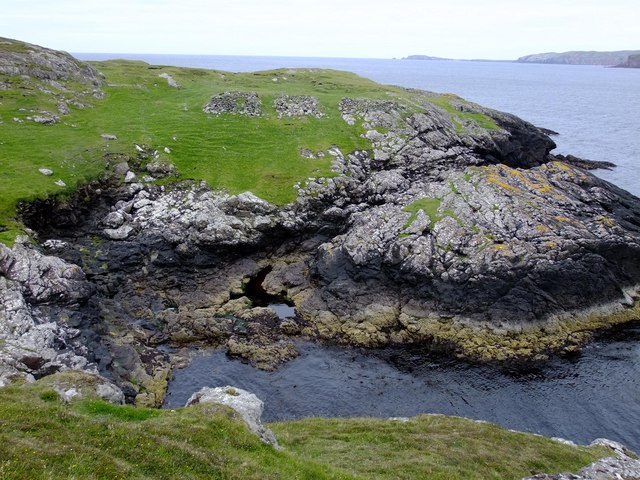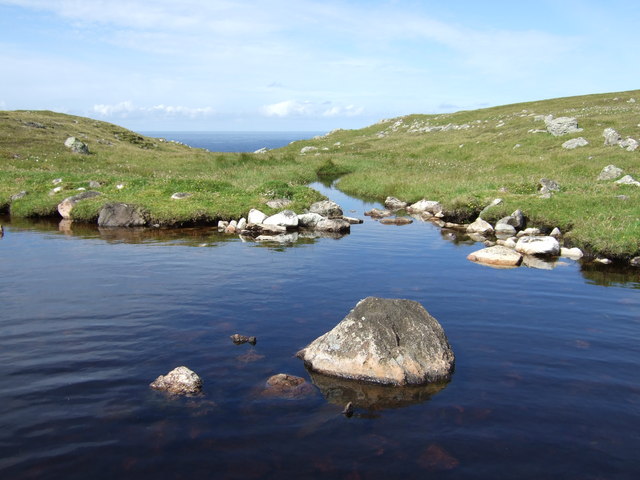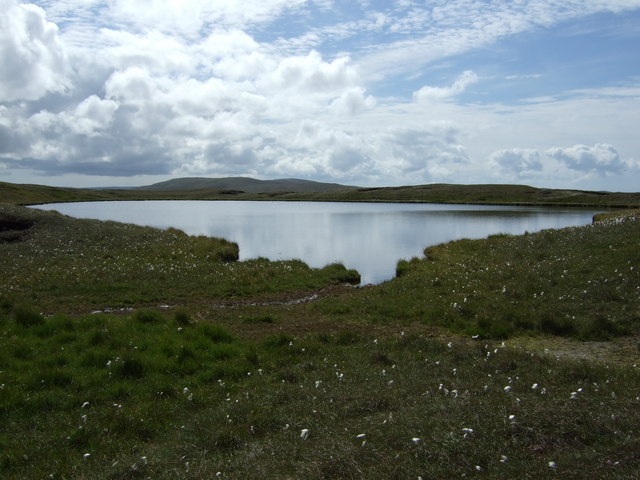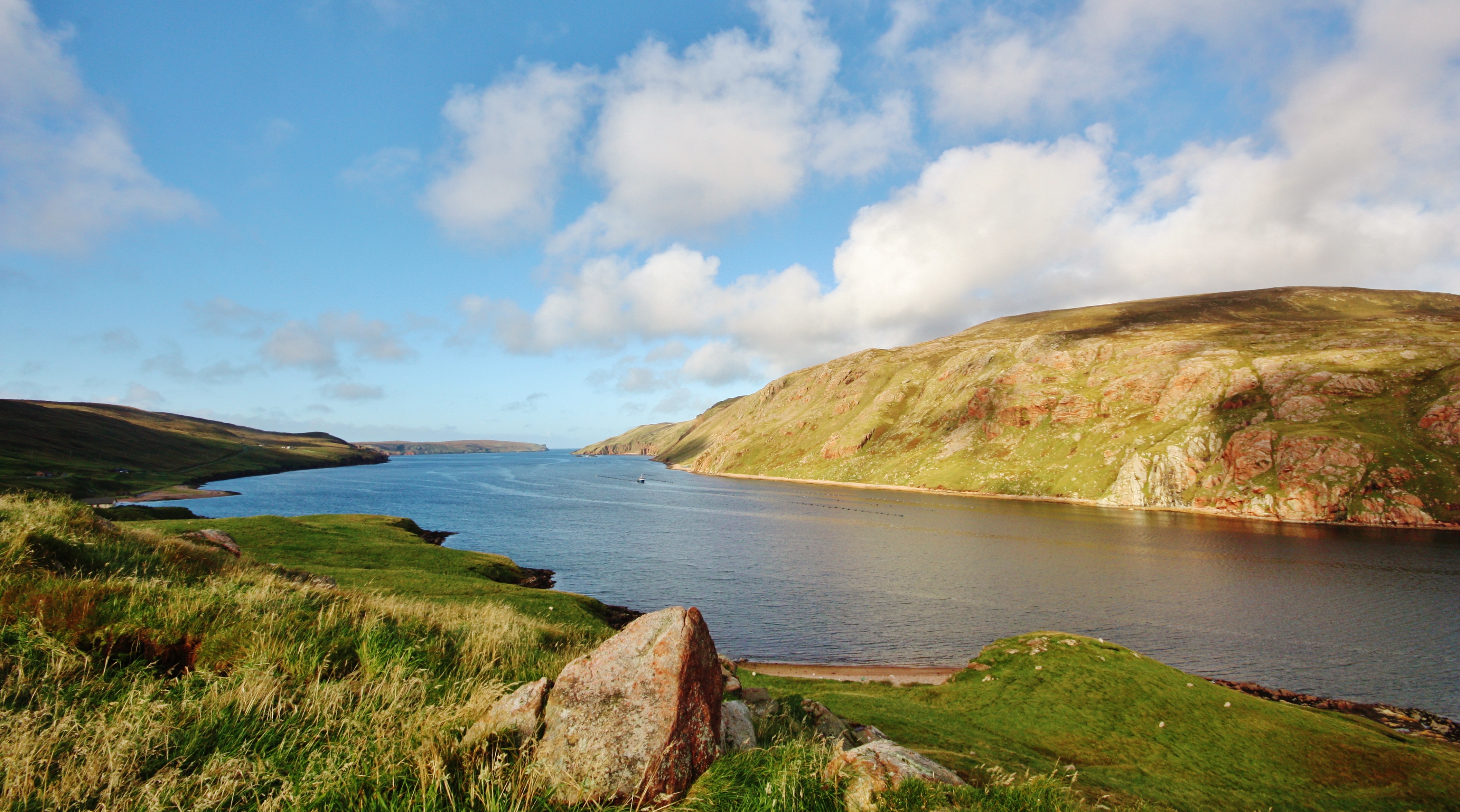The Faither
Coastal Feature, Headland, Point in Shetland
Scotland
The Faither
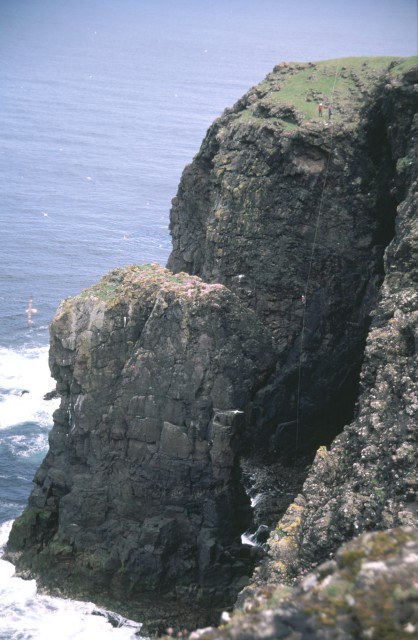
The Faither is a prominent coastal feature located on the Shetland Islands, an archipelago off the northeast coast of Scotland. It is specifically situated on the west coast of the mainland, near the village of Walls. The Faither is known for being a distinctive headland that forms a point jutting out into the North Atlantic Ocean.
This coastal feature is characterized by its rugged and dramatic cliffs, which rise steeply from the sea to a significant height. The cliffs of The Faither are composed of layered sedimentary rocks, displaying different colors and textures that add to its visual appeal. The headland is also home to various seabird colonies, including puffins, guillemots, and razorbills, which nest in the rocky crevices and provide a vibrant display of wildlife.
The Faither offers breathtaking panoramic views of the surrounding ocean, with unobstructed vistas that stretch for miles. On a clear day, visitors can see the nearby islands of Vaila and Linga, as well as the distant silhouette of Fair Isle. The coastal feature is a popular spot for nature enthusiasts, hikers, and photographers, who are captivated by its sheer beauty and tranquility.
Access to The Faither is relatively straightforward, with a designated path leading down from the nearby village of Walls. However, caution is advised when approaching the cliffs, as they can be unstable and subject to erosion. It is also important to respect the nesting birds and their habitats, ensuring minimal disturbance during visits.
Overall, The Faither is an outstanding coastal feature that showcases the natural beauty and diversity of Shetland's landscape. Its rugged cliffs, stunning views, and abundant wildlife make it a must-visit destination for those exploring the region.
If you have any feedback on the listing, please let us know in the comments section below.
The Faither Images
Images are sourced within 2km of 60.556058/-1.532979 or Grid Reference HU2585. Thanks to Geograph Open Source API. All images are credited.
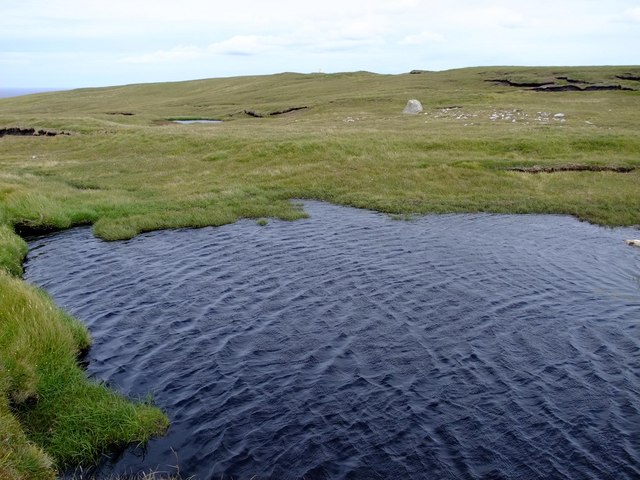
The Faither is located at Grid Ref: HU2585 (Lat: 60.556058, Lng: -1.532979)
Unitary Authority: Shetland Islands
Police Authority: Highlands and Islands
What 3 Words
///thank.vibes.landlords. Near Toft, Shetland Islands
Nearby Locations
Related Wikis
Tingon
Tingon is a peninsula in the north-west of Northmavine, Shetland. It is delineated on the east by Ronas Voe, and on the west by Hamnavoe. It is designated...
Lang Ayre
The Lang Ayre is a beach on the west side of Ronas Hill, Northmavine, Shetland. At 1 kilometre (0.6 mi) in length it is the archipelago's longest. It is...
Ronas Voe
Ronas Voe (pronounced [ˈrø̞nis ˌvo̞:] Shetland Dialect: Rønies Voe) is a voe in Northmavine, Shetland. It divides the land between Ronas Hill, Shetland...
Ronas Hill
Ronas Hill (or Rönies Hill) is a hill in Shetland, Scotland. It is classed as a Marilyn, and is the highest point in the Shetland Islands at an elevation...
Have you been to The Faither?
Leave your review of The Faither below (or comments, questions and feedback).
